Much of India is poorer than the sub-Saharan region
By RN Bhaskar
After all the talk about Viksit Bharat, last fortnight’s developments have highlighted the hollowness of such claims. What is ironic is that instead of focussing on the key economic issues at hand, ideology appears to have been more important.
Consider how a chief minister talks about development and Hindutva. Can one really have economic development without bringing together all sections of society? And also consider how recently, the government There are many indicators that point to the grim realities ahead.
Consider also how the government decided to place the Airports Act with a redrafted Bharatiya Vayu an Vidheyak, 2024. If there were sections to be modified, was a change of name necessary, especially when all lights are flashing red? Even the slum dweller is familiar with the word Airport. India needs to focus on bigger issues.
The warning signs are in full display now.
Telltale signs
- Watch how most of the trumpeters have suddenly become silent. No more talk about Vishwa guru. Silence greeted the story that India will become the third largest. And do note the shuffling when one refers to Viksit Bharat. Occasionally you do hear a voice claiming that the third quarter’s GDP growth will compensate for the fall in the second quarter. Suddenly everyone seems to be scurrying for cover before the tide runs out.
- The rupee continues to fall, despite the brash move by the RBI (Reserve Bank of India) to take long positions against the dollar (https://www.youtube.com/watch?v=oOgGhe1x4a4). The Central Bank just made a mind-blowing $60 billion bet against the US dollar! It is a daring gamble. And generally, central banks gamble when the stakes are high, even desperate.
- GDP growth rates fell in the third quarter of FY25. Many had been saying that this was going to happen. This time it did.
- GST collections also fell for the first time in several quarters. This author has maintained that much of the GST growth has come on account of government largesse. Each Rs.100 given away as freebies goes to buy goods and services which attract GST. That money, in turn is used to buy other goods and services, thus cascading the incidence of GST. With the government having less money for freebies (Free subscription — https://bhaskarr.substack.com/p/demonetisation-is-someone-flying), GST collections also suffered.
- Revenue Secretary Sanjay Malhotra underscored the importance of exercising restraint when issuing high-pitched demand notices to businesses and industries (https://www.cnbctv18.com/economy/revenue-secretary-sanjay-malhotra-stresses-balanced-approach-to-customs-duty-enforcement-19519098.htm). It was a tacit admission that the revenue authorities had become quite overbearing. Businessmen were being frightened away from this country (https://www.telegraphindia.com/business/35000-high-net-worth-entrepreneurs-left-india-during-narendra-modi-regime-amit-mitra/cid/1835449).
- While the government wants to spend $ 3 trillion on infrastructure (https://www.bloomberg.com/news/articles/2019-11-26/modi-needs-rivals-help-to-meet-3-trillion-infrastructure-goal), capital expenditure is 60% short of the budgeted target and unlikely to close the gap in the remaining two quarters. States have slowed capex too. That has put a brake on freebies as well. Employment generation will also be difficult.
- Industrial growth declined for the first time in two years (https://www.bloomberg.com/news/articles/2024-10-11/india-s-industrial-output-declines-for-first-time-in-two-years). It declined to 2.1% from the preceding quarter’s 7.1%. And as Menaka Doshi of Bloomberg reported, quoting SBI Research, operating income of non-financial companies contracted 1.5% in the July-to-September quarter versus 41% growth in the same period last year.
- Rural consumption too may have slowed down. The rise in rural demand could be the result of freebies which only end up teaching rural folk not to work, which could have disastrous consequences (https://bhaskarr.substack.com/p/the-ecstasy-and-agony-about-the-indian). In any case urban consumer demand has been slowing down (https://www.business-standard.com/economy/news/food-prices-cast-a-shadow-on-urban-demand-what-s-next-for-india-s-growth-124102900339_1.html).
- Overall credit expansion has slowed from approximately 16% last year to 11% this year, with growth in unsecured or consumption loans down from over 25% last year to 15% or lower now, as per a Macquarie report (https://www.bloomberg.com/news/articles/2024-01-17/india-s-biggest-bank-backs-move-to-curb-unhealthy-loan-growth) .
- The collapse in the stock markets has worsened the crisis with FIIs pulling out almost Rs 22,420 crore (https://economictimes.indiatimes.com/markets/stocks/news/fiis-november-surprise-a-tale-of-two-halves-in-indian-stocks/sell-off-to-buy-in/slideshow/116072588.cms).
- India continues to make goods expensive, despite the consumption slowdown, by adding import tariffs. The latest is for solar glass from China and Vietnam (https://www.mercomindia.com/india-slaps-anti-glass-from-china-and-vietnam).
- As Jamal Mecklai points out in his newsletter dated 2 December 2024 (Maga pressure on the rupee) “Indian business could suffer a double whammy – reduced domestic sales.”
- As a Bloomberg newsletter points out “Economists are sounding the alarm. Soumya Kanti Ghosh at State Bank of India cautions “tough times ahead.” Madhavi Arora at Emkay Global Financial warns of “stagflation,” while HSBC’s Pranjul Bhandari says, “the economy is at a crossroads.”
Expect extremely turbulent weather ahead.
Much of India is sub-Saharan
The situation is extremely serious. Analyses have shown that almost 90% of India remains in the sub-Saharan region. But the situation could be worse, if one looks at Per Capita National Incomes instead of per capita GDP. An analysis follows a bit later in this report.
This is evident from three tables.
Two of them are taken from the World Inequality Report 2022 — https://wir2022.wid.world/www-site/uploads/2021/12/WorldInequalityReport2022_Full_Report.pdf) The third is a computation done by Asiaconverge (www.asiaconverge.com).
Look at the India numbers first. Watch how the inequality in this country has ensured that the top 1% of the population enjoys an average per capita wealth PPP of € 1,181,400 (€ 1.2 million) compared to the average per capita wealth of just € 4,200 for the bottom 50% of the population. The difference is immense. It is the inclusion of the uber wealthy that gives the country an average PPP wealth of € 35,800. That figure is therefore misleading. But when one considers National Incomes, the picture becomes bleaker.
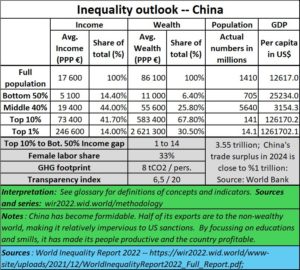 Now compare this with China. The top 1^ of the population enjoyed an average wealth of € 2.6 million against € 11,000 for the bottom 50%. In other words, the uber wealthy had 238 times the wealth of the bottom 50%. The multiple was higher for India at 281, pointing to lower inequality in China than in India.
Now compare this with China. The top 1^ of the population enjoyed an average wealth of € 2.6 million against € 11,000 for the bottom 50%. In other words, the uber wealthy had 238 times the wealth of the bottom 50%. The multiple was higher for India at 281, pointing to lower inequality in China than in India.
But the biggest embarrassment turns up when we look at National Income figures.
GDP figures are unreliable as a measure of economic health. This is because borrowings also get added to GDP. It is like a person borrowing money from the bank, and buying himself a Porsche, a swanky bungalow, fancy clothes, and spends lavishly at dinners and parties. He may appear rich, but the underlying is negative because he is living on borrowed funds.
That is why national income figures are more reliable.
The government of India does not like talking about this number. But fortunately, that number is available (https://pib.gov.in/PressReleaseIframePage.aspx?PRID=1945144).
Unfortunately, the number provided in net national income, in INR (which when converted into dollars at Rs.84.7) gives us a figure of $1182.
As the government itself states, “As per latest provisional estimate published on 31st May 2023, India’s per capita Net National Income (NNI) at constant (2011-12) prices increased by 35.12 percent from Rs. 72,805 in 2014-15 to Rs. 98,374 in 2022-23.”.
One can find the figures for the Sub Saharan region including GNI (gross national income) per capita figures (https://www.macrotrends.net/global-metrics/countries/ssf/sub-saharan-africa-/gni-per-capita). The sub-Saharan region, which according to most economists, is one of the poorest regions in the world. This region has a per capita gross national income of $ 1642.
Then one has to look up Macro Trends to find the corresponding GNI per capita for India (https://www.macrotrends.net/global-metrics/countries/ind/india/gni-per-capita). You discover that it is $ 2540.
We then reduce it to the share of wealth enjoyed by the remaining 90% of India’s population. For this we go to the World Inequality Report 2022 — https://wir2022.wid.world/www-site/uploads/2021/12/WorldInequalityReport2022_Full_Report.pdf .
It is then that we discover that 90% of India has a per capita GNI of just $ 889. That is almost half the income enjoyed by the sub-Saharan region.
And yet, we hear the government telling us that we should be proud of a Viksit ([prosperous) Bharat (India).
India has squandered away three of the most important things that any sensible government should have done (Free subscription — https://bhaskarr.substack.com/p/india-spurns-its-advantages). It has ignored investing in its people by providing it good education and health, of protecting its water, and nurturing its talented entrepreneurs. Instead, the government has opted for giving away freebies, even while wealth generation has clearly been on the decline. It is only a matter of time, when such profligacy will result in the government distributing poverty.
Solutions
- Make goods cheap, even if it means lowering import duties. India needs to revive consumption markets and competition. Reduce government taxes, not interest of loans.
- Liberate industry from government raids. Liberate it from opposition slanders and from global players who want to derail India’s progress. The last thing this country needs is for even the last few industrialists to stumble.
- The role of wealth generators can never be overestimated. They are the most crucial inputs for Viksit Bharat that India always talks about, but fails to understand what it entails.
- Focus on education and skill development on a war footing. Use tax incentives to spur investment in these areas, yet ensure that there is constant measurement of outcomes, to ensure that quality does not suffer. Focus on maths and science, not on language and history or other ideological baggage.
Only then can you have a Viksit Bharat.
===============
Do watch my latest podcast – a conversation with Manish Chokhani, an eminent finance guru, on the geopolitical climate today. You can find it at https://youtu.be/6js6gfKPEkg



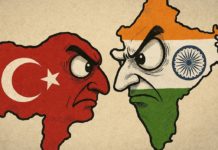








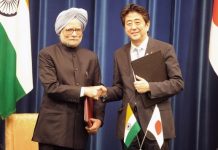








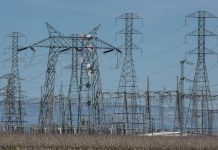




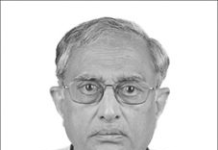

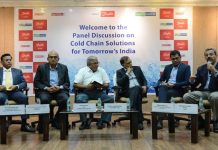

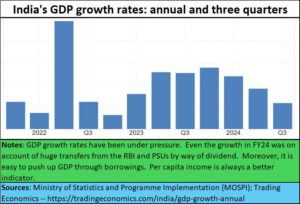
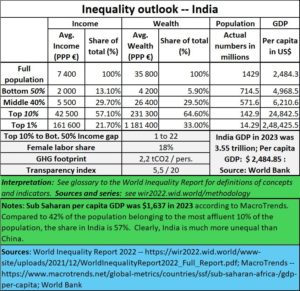
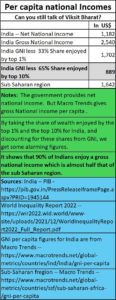







COMMENTS